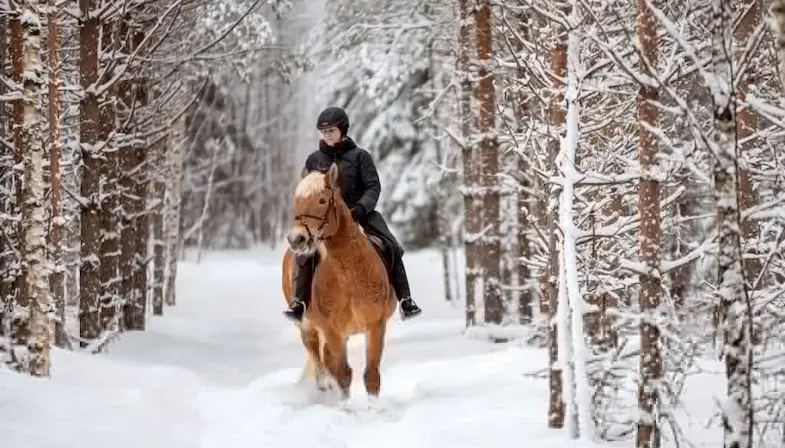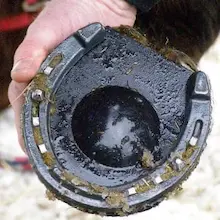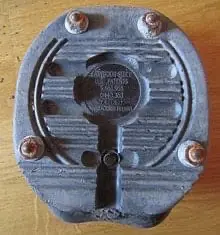We all love riding in the summer when the air is warm and the sun is shining but just because it’s snowing outside and the air is bitterly cold it doesn’t mean to say that you can’t or shouldn’t be riding. Unlike riding in the summer you will need to take extra precautions such as wearing more and thicker layers but there’s no reason why you can’t have just as much fun (if not more fun) riding in the snow as you can in the summer.
Is it safe to ride horses in the snow?
Horse riding in the snow can be a lot more tiring for both you and your horse than you might think but that doesn’t mean to say that you should stop riding in the winter nor does it means that it’s unsafe to do so. Yes, there are more risks associated with riding in the winter purely because of the cold weather and the slippery conditions but if you prepare yourself for that and make sure you and your horse are dressed accordingly then riding in the snow is definitely safe.
The scenery can look very different when it’s covered in a blanket of white so make sure you know exactly where you’re riding and try and stay on established paths are much as you possibly can. You might think you don’t need it but it never hurts to carry a pocket GPS device with you just in case, or at the very least use the map on your phone and check it from time to time. A lot of GPS devices and phones will even track where you’ve been so if you do get lost you’ll be able to use that to retrace your steps.
Your horse will have to work twice as hard to lift his legs up and move through the snow so you need to take this into consideration when planning your trail ride. You may find that you’re not able to travel as far as you would be able to if there’s no snow, don’t worry this is normal and as you both acclimatize to the weather you’ll find that you’re able to cover more distance.
When you’re trail riding in the snow it’s far better to stay at slower speeds, after all, you can’t see the ground so don’t know what’s lying underneath the snow. You won’t be able to see any holes or branches that have been hidden by the snow. Even if you’re traveling on a well-trodden path it’s important to stay in a lower gear. If a lot of riders are using the same path then, of course, there won’t be as much snow but, over time, the snow will becoming more compact which will make it much more slippery as it starts to turn to ice. This will, in turn, make it far more hazardous and increase the risk of your horse slipping and sliding if you’re going too fast.
How do you exercise a horse in the snow?
During the winter everything outside is obviously going to get cold much quicker than it would normally do, even if there’s no snow on the ground. If your horse’s tack is kept outside then you might want to warm up the saddle pad a little before putting it on your horse so that it’s not such a shock for him. Personally, I also like to warm the bit up too, I simply do this by putting it in my pocket for 30 minutes to an hour before I ride. That way my body temperature has taken the edge off of the cold and helped to warm it up.
Exercising during the winter is tougher on your horse’s muscle than it is during the summer because when the muscles are cold they’re more prone to being damaged which is more likely to result in injury. Before you start any ride in the winter you should warm your horse up by walking him around slowly for 10 to 15 minutes. This will give all of his muscles a chance to increase their temperature and become more flexible.
Once you’ve warmed up your horse’s muscles he’ll be ready for your ride but it’s important to still take it slow.
Can you lunge a horse in the snow?
If you’re not able to ride in the snow, or if you don’t want to, then lunging can be a great alternative. Not only will it help to keep your horse fit during the winter but, like lunging at any time of year, it’ll also help to develop his balance and rhythm. Your horse is less likely to get so hot during a lunging session so cooling him down afterward won’t be so much of an issue.
You can also exercise your horse in hand if you want to, this will not only give you a chance to bond with your horse but also to try out other activities such as horse agility.
What do you wear horseback riding in the snow?
Just like riding at any time of year, you’ll soon warm up which is why it’s better to wear lots of thinner layers rather than one thick quilted jacket. You should still wear a sweater to two but they don’t need to be fleece sweaters though. With multiple layers, if you start to get too hot you can then remove a layer without losing any more heat than necessary. Your outer layer should ideally be waterproof, even if it’s not raining or snowing waterproof is still a good idea. If you’re riding under branches that are heavy with snow then it’s inevitable the snow will fall at some point. If you happen to be under it when the snow falls then all of that ice-cold snow will quickly travel through every layer and make you extremely cold. With a waterproof layer, the snow won’t make its way through to your skin.
Your extremities are the hardest to keep warm so a good pair of riding gloves is a must-have. Personally, though I find that wearing a couple of pairs of socks is essential too, wearing a thick pair I find that I can’t move my toes as freely but with two or three pairs (depending on how cold it is) I don’t have any problem wriggling my toes which helps to keep them warm.
What should your horse wear while horseback riding in the snow?
Horses can adapt to the cold weather far better and far quicker than we can but that doesn’t mean to say that there’s nothing extra they should be wearing in the winter.
Blanket
Whether or not you use an exercise blanket is down to personal preference. Your horse will warm up over the course of your rider but using an exercise blanket will help to keep the cold out before he does warm up. There’s a wide variety of different blankets, from quilted to waterproof and everything in-between.
From a personal point of view, I like to use a waterproof blanket if there’s snow on the ground. I prefer using this because if any snow falls from branches it won’t land directly on the horse. At the same time, it’ll allow him to not get too hot.
I like to keep a quilted exercise blanket for rides when the temperature is below freezing but there’s no snow. In these conditions, I’m not worried about him getting wet but obviously want him to stay warm.
Hoofwear
We all have our opinions on whether horses should be shod or not but regardless of how you feel about this issue there’s a solution for you. The most important thing for cold weather riding though is to give your horse grip and stop the snow building up on the underside of his hooves.
Shod
If you have your horse regular shod and know that you’re going to get a lot of frost or snow then you might want to ask your farrier about fitting shoes that allow you to attach studs. These can temporarily be screwed into the shoes just before your ride and then removed afterward.
Depending on how deep the snow is you might want to also consider anti-snowball pads or snow rim pads. Both of these will help to stop the build-up of snow on the underside of the hooves which will, therefore, reduce your horse’s grip.
Unshod
If you’re from the ‘it’s not natural for horses to wear shoes’ camp but you’re worried about snow building up on the underside of your horse’s hooves while you’re out riding then fear not. Recent years have seen many breakthroughs in equestrianism and general horse care and one of those recent inventions is hoof boots. You might think I’m talking about something like overreach boots but believe me, I’m not – hoof boots are rather like the shoes that we wear really. They can be put over your horse’s hooves just before riding and then be removed after and best of all you can even get special ‘cold weather’ hoof boots that are fitted with studs to help give your horse extra grip and traction during the cold.
How to cool your horse down after riding in the snow?
During the winter it’s even more important to cool your horse down properly after exercise. If he’s all hot and sweaty and you just turn him out it’s possible that the sweat could freeze which can lead, in some cases, to hypothermia. Personally, I never ride if the temperature is lower than -30°C (-22°F) because I don’t want my horses to get too hot when the temperature is so low.
To cool your horse down properly after a ride you need to allow his muscles to cool down as well as his body to dry naturally. If you have a cooler rug you can untack your horse, put the cooler on and then lead him around for around 20-30 minutes. This will give his muscles a chance to cool down while at the same time allowing his body temperature to natural return to normal. After he’s cooled down give his coat a quick brush to remove the dried sweat then check his hooves to make sure there’s no build of snow and remove any if there is.
Further reading
Are you and your horse prepared for the winter? If not you might be interested in this related article on preparing your horse for winter.
I hope you found this article helpful. If you did I’d be grateful if you could share it please as it would really help me.
Recommended products
Over the years I have tried hundreds of different horsey products, from various blankets and halters to different treats. Some I’ve loved, others I’ve hated but I thought I’d share with you my top all-time favorite products, the ones I never leave the yard without. I’ve included links to the products (which are in no particular order) that I really think are great.
- Horse Knots by Reference Ready – If you’re like me and enjoy pocket reference guides then you’ll love this knot tying guide. These handy cards can easily fit in your pocket or attach to the saddle for quick reference. They’re waterproof, durable and are color coded to make them easy to follow.
- Mane ’n Tail Detangler – Even if you never show your horse you’ll need to detangle his tail from time to time (and possibly his mane too) which is always a challenging chore! I’ve found that if I run a little bit of detangler through my horse’s tails every few days it stops them from getting matted up and makes combing them easy, even if they’re coated in mud. I don’t know if I should admit to this or not but it also works wonders on my hair.
- TAKEKIT Pro clippers – Over the years I’ve tried a lot of different clippers and while some were obviously better than others I found these to be by far the best. They are heavier than a lot of other clippers but for me, that’s a good thing, it makes them feel more sturdy and hardwearing. On top of that they have a range of speeds so are just as good for clipping your horse’s back as they are his face. I also like the fact that they come in a handy carry case but that’s not for everybody. The company that makes them is super good and incredibly helpful too, a real bonus these days. The only thing I wasn’t keen on was the fact that it doesn’t come with any oil, but that’s not a major problem as it’s not difficult to buy lubricant.
- Shire’s ball feeder – There are so many boredom buster toys out there but I like to use these every day, regardless of whether or not my horses are bored. I find that it helps to encourage my horses to problem solve by rewarding them with treats (or pieces of fruit) but it also mimics their natural grazing behavior which helps to keep them calm and de-stressed.
- Horse safe mirror – This is a strange one that many people are surprised about but I like to put horse safe mirrors in the trailers as well as in the quarantine stalls. It helps to prevent the feeling of isolation by giving the impression of other horses being around. Being herd animals horses can get extremely stressed when they feel that they’re on their own but with these stick-on mirrors, they believe that at least one other horse is with them.
- Rectal thermometer – I know this isn’t glamourous at all but it’s vital for your horse’s well-being to be able to check their temperature and a rectal thermometer is the easiest way of doing this which is why I’ve added it to the list.
Shopping lists
I’ve also put together a few shopping lists of essential items that I’ve found helpful over the years. I’ve broken the lists down into different categories rather than put everything in one massive list 😉



